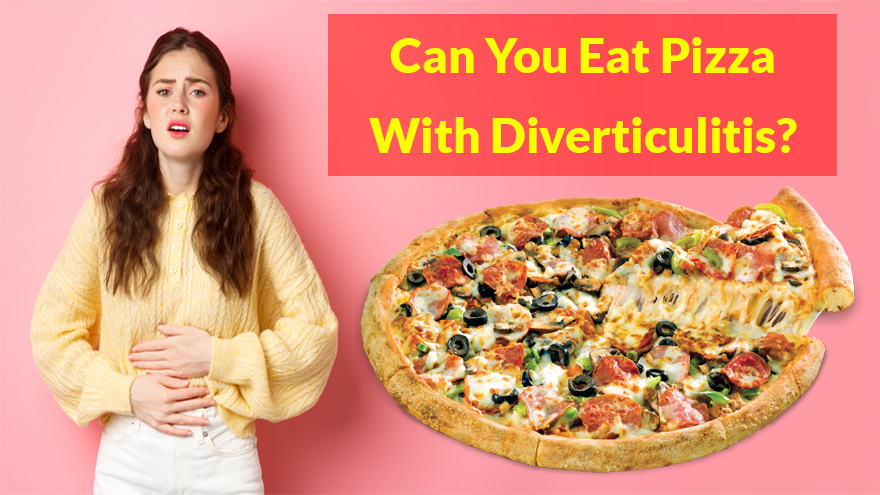You might be thinking about eating your favorite pizza while suffering from Diverticulitis disease.
The only question that makes you worried is Can You Eat Pizza With Diverticulitis or not?
The short answer is: Yes, it is possible to eat pizza with diverticulitis, but it’s important to choose the right type of crust and toppings.
In this in-depth guide, I’ll tell you about which ingredients you can add to your pizza and which ones you must avoid. It enables you to enjoy pizza while staying safe from its possible side effects for Diverticulitis.
Let’s Talk a Bit About Diverticulitis
Diverticulitis is a common digestive condition that affects the large intestine. It occurs when small pouches in the intestine, called diverticula, become infected or inflamed. This can cause severe abdominal pain, nausea, and diarrhea.
Many people with diverticulitis are unsure about what they can and can’t eat. In particular, they often wonder if they can still enjoy their favorite foods, such as pizza.
Pizza and Diverticulitis
Pizza is often considered a high-fat and high-sugar food, which can make it difficult to digest. Additionally, some types of pizza toppings, such as processed meats and cheese, can be difficult for people with diverticulitis to digest.
However, the real concern for people with diverticulitis is the crust of the pizza. Many pizza crusts are made with white flour, which is refined and lacking in fiber. This type of crust can be difficult for the intestine to break down, which can exacerbate symptoms of diverticulitis.
Eating Pizza Safely with Diverticulitis
If you have diverticulitis and still want to enjoy pizza, there are a few steps you can take to make it safer and more easily digestible:
- Choose a whole-grain crust. Whole-grain crusts are higher in fiber, which can help your intestine break down the pizza more easily.
- Opt for lighter toppings. Instead of heavy meats and cheeses, consider toppings such as vegetables or chicken, which are easier to digest.
- Limit portion size. Eating too much pizza can be difficult for the intestine to digest, so it’s important to limit portion size and eat slowly.
- Avoid spicy or fatty toppings. These can cause discomfort and worsen symptoms of diverticulitis.
What Ingredients Should I Eat on Pizza When I Have Diverticulitis?
Here are some ingredients to consider when making a diverticulitis-friendly pizza.
1- Low-Fiber Toppings
Fiber is essential for good digestive health, but it can be tough on the intestine during an episode of diverticulitis. To reduce discomfort, choose low-fiber toppings like cheese, mushrooms, onions, and bell peppers. These ingredients are not only low in fiber, but they also provide the flavor and texture that make pizza so enjoyable.
2- Protein-Rich Toppings
Protein is essential for healing, and it is important to choose ingredients that are high in protein when you have diverticulitis. Chicken, ground beef, ham, and sausage are good options for a protein-rich pizza. If you prefer a vegetarian option, try topping your pizza with cheese, tofu, or legumes like chickpeas or lentils.
3- Herbs and Spices
Herbs and spices can add flavor to your pizza and also provide health benefits. Basil, oregano, and thyme are good options for a diverticulitis-friendly pizza, as they have antibacterial properties that can help with the healing process. Other spices like garlic and red pepper flakes can add a pop of flavor without irritating the intestine.
Avoid Problematic Ingredients
Some ingredients can be particularly problematic for people with diverticulitis, so it is essential to avoid them. These ingredients include high-fiber foods like whole-grain crusts, raw vegetables, and legumes. Spicy and acidic ingredients like hot sauce and tomato sauce should also be avoided, as they can cause discomfort and irritation.
Conclusion
By following the tips outlined above, you can still enjoy your favorite pizza while reducing the risk of exacerbating your symptoms.

